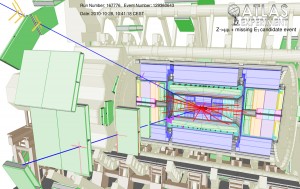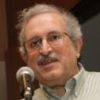
The {i}Detailed Baseline Design{/i} report will contain an update of the ILC physics case. Image: ILC
The Global Design Effort (GDE) has promised to submit the ILC Technical Design Report by the end of 2012. To accompany this document, the physics and detector community is preparing the Detailed Baseline Design report (DBD). That report will discuss the physics measurements to be carried out at the ILC, present the detailed technical designs of the ILD (International Large Detector) and SiD (Silicon Detector) detectors, and demonstrate the capabilities of these detectors through simulation of specific reactions that will be observed at the ILC.
An important chapter of the DBD will be the restatement and updating of the physics motivation for the ILC. This should take into account the new information on the ILC capabilities that we have from the design studies and the new information about physics that we have from the results of the Large Hadron Collider (LHC) at CERN. I am writing to encourage members of the ILC community to become involved in the preparation of this report.
The importance of building an electron-positron linear collider that would complement high-energy hadron collider experiments has been understood for a long time. This accelerator would enable precision measurements of the electroweak couplings of the top quark, direct measurements of the couplings of the Higgs boson, and detailed studies of new particles that might be found in the energy range that will be opened by the LHC. In 2001, high-level panels in the US, Europe, and Japan declared this the highest priority for the next global project in high-energy physics. A lengthy menu of reactions that could be studied and measurements that could be made at the ILC was presented as a volume of the ILC Reference Design Report, completed in 2007.
The arguments presented ten years ago still provide a strong case for building the ILC. The mysteries of particle physics that will be addressed in the ILC programme – the nature of the Higgs boson, the origin of the masses of elementary particles, and the origin of cosmic dark matter – are still the crucial questions for our field. Today, we have a more precise understanding of how the ILC will address these questions. The simulation studies done for the detector Letter of Intent reports and the additional studies that will be done for the DBD enlarge our view of what the ILC will accomplish. These studies cover, in particular, the complete suite of measurements on the couplings of the Higgs boson.
A major issue remains: What will the LHC tell us? In 2005, when the GDE was created, it was thought that the LHC would begin operation in 2007 and that by 2012 the major experiments would have accumulated hundreds of inverse femtobarns (fb-1) of collision data at a centre-of-mass energy of 14 teraelectronvolts (TeV). From the results of these experiments, we would know the most important measurements that must be targeted at the ILC. Would these results call for a precision study of a light Higgs boson, or measurement of top quark couplings to a strong-interaction electroweak symmetry breaking sector, or studies of other, newly discovered particles?

An event collected by the ATLAS detector in 2010 which apparently contains a Z{sup}0{/sup} boson decay and large missing energy. Image: ATLAS
At the moment, the ATLAS and CMS experiments are reporting results based on 1 to 2 fb-1 at 7 TeV. The implications of the results are decidedly unclear. Each experiment has collected 5 fb-1 in 2011; by the end of 2012, each experiment will have more than 10 times the amount of data in the samples that are analysed now.
Many questions that will eventually be answered by the LHC will not be resolved by the end of 2012, but we have learned much already, and we will learn more in the next year.
Much attention is now focused on the Higgs boson. The Higgs boson is a part of the minimal version of the Standard Model. In this context, all couplings of the Higgs are predicted from the value of the mass. The analysis of precision data on the weak interaction favours a low value of the Higgs boson mass. Experiments at CERN’s former large electron-positron collider, LEP, exclude values of the mass in this minimal theory below 114 GeV. The LHC experiments now exclude values of the Higgs mass from 145 GeV to high values excluded by the weak interaction data. The only possibility for the Higgs boson mass is then that it lies in the narrow window between 114 and 145 GeV. This result, strictly, applies only in the Standard Model, but many models of new physics also contain a light Higgs boson with properties very similar to the Standard Model Higgs boson. The mass range still allowed for the Standard Model Higgs boson will be explored by the LHC experiments in 2012. In the next year, then, either the LHC will discover the Higgs boson at a mass that will allow precision experiments at the ILC, or the Standard Model will be ruled out and the catalogue of possibilities for new physics will need extensive revision.
Whatever surprises come from the next year of LHC data, there will be a story to be told about the implications of the results for the ILC programme. The Research Director’s Physics Common Task Group is organising a study that will lead to a report that will appear as a chapter of the DBD. A preliminary outline of the report and a list of conveners of the various study groups can be found here. The conveners are:
- W and Z Physics: Tim Barklow (SLAC), Juergen Reuter (DESY)
- 2-fermion processes, including resonances, compositeness, and extra dimensions: Yuanning Gao (Tsinghua) and Maxim Perelstein (Cornell)
- Top quark: Andrei Nomerotski (Oxford) and Andre Hoang (Vienna)
- Higgs boson: Keisuke Fujii (KEK) and Heather Logan (Carleton)
- Extended Higgs sectors: Aurore Savoy-Navarro (Paris) and Shinya Kanemura (Toyama)
- Supersymmetry: Jenny List (DESY) and Howard Baer (Oklahoma)
- Cosmological connections: Geraldine Servant (CERN) and Tim Tait (Irvine)
If you would like to contribute, please contact the relevant convener. More detailed contact information is given on the web page linked above.
It will hardly be possible to attend a physics meeting in the next year without hearing debates about the LHC results. At the linear collider workshops in 2012, there will be sessions dedicated specifically to the implications of LHC results for physics at the ILC. We have already held the first discussions on this topic at the Granada LCWS meeting; see the report by Sakue Yamada in the 20 October issue of ILC NewsLine. The workshops for 2012 include the 3rd LCFORUM at DESY, coming up soon on 7 to 9 February 2012; the 2012 ACFA LC meeting in Daegu from 23 to 26 April; and the 2012 LCWS in Arlington, Texas, from 22 to 26 October. Please plan to participate.
The coming year will be full of uncertainty and surprises. It will be exciting to follow the news as it comes. But also, we hope, we will obtain sharp guidance for future experiments on new particles and forces.


Recent Comments